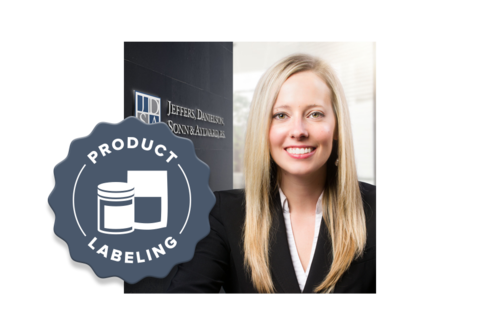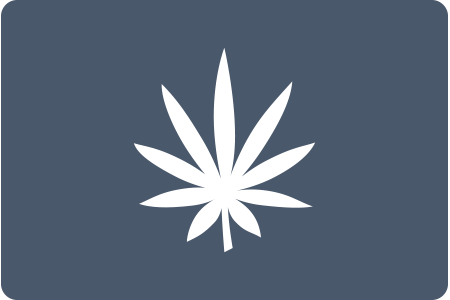The Dangers of Mislabeling Food Products

Season 3, Episode 7 – In this age of heightened awareness to food allergies, consumer demand for transparent food labeling is significant. Terms such as “all natural,” “organic,” “gluten-free,” and others, are everywhere. But food product manufacturers, co-packers, distributors, and others along the chain of distribution must take concerted steps to ensure accurate food product labeling and avoid cross-contamination. Companies must understand the governing regulations, and the risks from lawsuits brought by consumers or enforcement actions by federal agencies for failure to comply. JDSA attorney Sally White discusses some of the more common risks and how companies can best avoid them, in The Dangers of Mislabeling Food Products.
The Dangers of Mislabeling Food Products
Sally Whit
Download
This is the weekly podcast that clearly explains complicated legal issues, and how the law applies to your everyday personal and professional life. *JDSA’s Law Talk discusses general legal issues, but does not constitute legal advice in any respect. Please seek the advice of counsel prior to making or refraining from a legal matter.
TRANSCRIPT
Announcer: This is JDSA’s Law Talk. This is a program that gives you the straight facts on our laws and how they affect your everyday personal and professional life.
Host: Your morning cup of coffee. Don’t mess with it. The milk you add to your breakfast. The honey you put in your tea. For many, these are part of your every day, but are these items as pure and natural as you think? How do you know? Does the label accurately represent what you think is in that bottle? Maybe, or maybe not. If you’re in the retail or food manufacturing industry, today’s episode is largely for you. In this episode of JDSA’s Law Talk, trade mark attorney and partner Sally White is here to discuss the dangers of mislabeling food products. Sally, always good to talk to you.
Sally: Always good to be here.
Host: And really, whether we’re talking about intentional bad actors misleading the public, or honest mistakes. This is information that people need to know.
Sally: It is, and today we’ll talk about the dangers of mislabeling food products, and ways that retailers and manufacturers, even distributors, can take steps to avoid these pitfalls.
Host: Alright, we’ll lay the groundwork and get into the basics. That’s coming your way next, right here, on JDSA’s Law Talk.
Announcer: This is JDSA’s Law Talk. Join the conversation. Send us your comments and questions to [email protected].
Host: Well if you’d like to hear discussion about another legal topic that’s affecting you personally, or professionally, listen to other episodes of JDSA Law Talk at jdsalaw.com. Welcome back to JDSA’s Law Talk, I’m Clint Strand talking with our featured attorney Sally White, about the dangers of mislabeling food products. Sally, let’s talk about the basics. What do we mean exactly when we talk about mislabeling of food products?
Sally: Well mislabeling of a food product can occur when a food products label does not accurately reflect its ingredients. This may be intentional or unintentional. If it’s intentional we hear the terminology food fraud. Where companies deliberately try to capitalize on putting something in the ingredient that’s not accurately listed on the label. But this also may be unintentional, for example, when it’s an unintentional error on the part of a company who either experienced a quality control failing or was simply uninformed about the governing regulations and did something wrong.
Host: Now this feels like an obvious question, but again, the devils are in the details and the details are where we live, so why exactly is proper labeling of food products important?
Sally: The biggest concern is a public health issue.
Host: Well of course.
Sally: Right. I mean if you are a consumer, you want to know what you’re eating, and this has become even more trendy year by year as we go. Consumers want to know what exactly is in their food. We see things like organic, and all natural, and gluten-free, those sorts of buzz words. So, a manufacturer, or a brand owner, or a retailer, wants to make sure that their not exposing people with food allergies to items that could be harmful or even life threatening. Or sometimes people are interested in avoiding certain foods for dietary or religious reasons, or in some cases, contaminated, diluted or mislabeled food could increase the risk of mishandling, bacteria growth, and the introduction of harmful diseases. So, we’re really concerned, mostly about public health.
Host: Health and making sure that those buzz words are actually real words, right?
Sally: Exactly.
Host: Okay, let’s talk about food ingredients and additives, that’s part of food as well, right?
Sally: Right, so it’s important to identify the precise ingredients that are in the food, any additives. As we discussed, if a food product is not accurately labeled, then a consumer may not be able to tell what they’re eating, potentially until it’s too late.
Host: Sally, let’s now talk about violations. What are some real world examples of food labeling violations you and your clients see out there?
Sally: Well, food allergies are a big one. There are more than 160 foods that can cause allergic reactions in people with food allergies. The Food and Drug Administration recognizes the 8 most common allergenic foods. These are milk, eggs, fish, crustacean shellfish, tree nuts, peanuts, wheat, and soybeans. You may be familiar with allergies related to these foods. These foods account for 90 percent of allergic reactions to food.
Host: Oh wow!
Sally: So, because of that, these 8 foods, and any ingredient that contains proteins derived from them, are designated “major food allergens” by the Food Allergen Labeling and Consumer Protection Act of 2004. Under that act, these foods require specific labeling.
Host: That makes sense if 90 percent of the allergic reactions to food derive from those 8 items. What are some other examples of food mislabeling?
Sally: Well cross contamination is a big one, and this occurs when an allergenic product comes into contact with a product but is not listed on the label. For example, if you list that your product is gluten free, but it’s been manufactured on a line that actually contains a wheat containing product or something else that contains gluten, just by virtue of coming into contact with that, it could put people at risk who have significant gluten sensitivities. So, food product producers, manufacturers, and distributors, must all be vigilant about protecting against this risk, including accurately labeling products that contain allergens, and making sure to prevent cross contamination.
Host: Alright, what about other examples of food mislabeling. Could there be shenanigans involved?
Sally: Well there could be, and again, sometimes these are intentional, sometimes these are unintentional. So, a big one that we’ve seen lately is that if a company uses deceptive labeling or advertising, they may get into hot water with the Federal Trade Commission. Specifically, the Federal Trade Commission has begun going after companies who self-certify a quality about their products without revealing that the certification seal is not a third-party certification, but it is just a self-certification or a certification by a closely affiliated company.
Host: Okay. What other examples of food labeling violations are we talking about here?
Sally: These could include failure to warn of risks associated with the food product, such as dietary supplements, false information regarding the nutritional content of the food, misinformation about the standard, grade, or quality of the product, a label, that by design, is difficult to read, or even incorrect expiration dates.
Host: All makes perfect sense. So now that we’ve set the table here let’s get ready to feast on the details. Coming up next here on JDSA’s Law Talk, we’ll talk about regulation. We use some examples of some commonly mislabeled food items, and more. That’s coming your way next, right here, on JDSA’s Law Talk.
Announcer: JDSA’s Law Talk will be right back with more on today’s topic. Add your voice to the show. Email your questions to [email protected].

COMMERCIAL BREAK: Cannabis law. It regulates marijuana production, sale, and use. At JDSA law, we help growers, producers, and retailers understand this emerging industry. This is how we make your life better. Committed to you since 1946, JDSA law.
Announcer: This is JDSA’s Law Talk. Visit us now at jdsalaw.com.
Host: Want to learn more about the law? A JDSA legal seminar is a great way to better understand aspects of the law, and how it affects your personal and professional life. Sign up today at jdsalaw.com/seminars.
Welcome back to JDSA’s Law Talk, I’m Clint Strand talking with Sally White about the dangers of mislabeling food products. Sally we’ve set the table here for this topic, see what I did there, now let’s feast on the details. Let’s talk regulations. How exactly are these food labels regulated?
Sally: Well most food labels are regulated by the U.S. Food and Drug Administration, the FDA, in addition, labels for meat and poultry products are regulated by the United States Department of Agriculture, USDA, Food Safety and Inspection Service, FSIS. However, the nutrition information required on the labels of FSIS regulated products is nearly the same as that for FDA regulated products. The two agencies have worked together to standardize nutrition labels. Both agencies have regulations governing food producing, labeling, and recalls.
For some statistics, in 2016 there were 650 food recalls. 540 of these were by the FDA and 110 were by the USDA, and both the FDA and USDA have guidelines and reporting links on their website.
Host: So, if you would like to report a violation you can go to either of those links on their websites, and do that. Let’s talk about examples now of commonly mislabeled foods. What do you see, and what do your clients see, out there that are commonly mislabeled?
Sally: There have been a few issues that have garnered nationwide, worldwide even, attention in recent years. One example is honey. An international fake issue was documented a few years ago when a honey was contaminated with unauthorized antibiotics, and pesticides, that can impose a series of health risks to consumers. Another product that encountered some mislabeling issues was milk. Several years ago, a situation in China caused alarm throughout the world, when children from poor farm families in China died after being fed fake milk formula that contained little to no nutrients.
Fish is another big one. Fish is one of the most commonly tampered with foods sold in the United States. According to a recent study conducted by Oceana, approximately 60 percent of the fish labeled tuna, in fact is not tuna. Also, 74 percent of sushi is a different species than advertised.
Host: 74 percent?
Sally: I know, be careful with that sushi.
Host: Oh man, you’re messing with my California rolls for me from now on. No, I’m joking, but keep going.
Sally: Olive oil is another difficult product. Extra virgin olive oil supposedly imported from Spain or Italy, may not be from the country the food label claims. Some producers have been found to dilute the food product with fake oils, such as sunflower oil, and vegetable oil. These are things for a retailer to be concerned about when they’re looking into distributors, manufacturers, things like that. Another product that may have issues is saffron. The spice is exotic and costly, which makes it vulnerable to fraud. And coffee…
Host: No! No, not coffee!
Sally: I know I’m sorry!
Host: Really?
Sally: Instant coffee is more prone to adulteration than beans. Often coming cut with cereal, starch, and figs, among many other ingredients. To prevent the risk of possible fake coffee, buy whole coffee beans and grind them.
Host: You just made me very happy. I can’t remember the last time I bought instant coffee. Are there any other items that really ring a bell for you?
Sally: The last one is orange juice. Some juice producers have been known to put unrecognizable lemon juice, grapefruit juice, or even beet sugar in their juice.
Host: Let’s talk about this from the retailer’s standpoint. What you put on your shelves is as good as your word. I imagine every retailer out there wants to be straight forward and transparent with what they’re selling their customers, because if the customer is not buying what they thought they’re buying, it reflects on the person who they bought it from. So, protections, how would a diligent food retailer protect itself from these issues?
Sally: Well, the problem does not usually lie with solely the food product retailer, but depending on the preciseness labeling issue, every step along the supply chain may bear some responsibility. So, food retailers must be diligent in choosing trustworthy vendors, and suppliers. Specifically, a food retailer will want to pay attention to the terms of their contracts with suppliers. For example, who’s responsible for the misbranding of a product? What happens if a consumer brings an issue to the retailer’s attention? Food retailers should not simply rely on government food inspectors to ensure proper food product labeling. Keep in mind that this issue, the integrity of your food products, is essential to the brand’s reputation.
As one highly publicized recall caused by a food scandal may cost a loss of good will among a company’s customers, it really is a critical issue.
Host: Certainly is. We’ve talked about a lot of issues here, we’re going to bring it all together when it comes to mislabeling food products, and keeping yourself, and your consumers in the know. That’s coming your way next, right here on JDSA’s Law Talk.
Announcer: You’re listening to JDSA’s Law Talk. Brought to you by JDSA Law. One of the largest full-service law firms in North Central Washington.

COMMERCIAL BREAK: Class actions. They are an important avenue of relief for people or groups who have been harmed. At JDSA Law, we aim to achieve fair victories for our clients. This is how we make your life better. Committed to you since 1946, JDSA Law.
Announcer: This is JDSA’s Law Talk. Connect with us on Facebook, and on Twitter @JDSALaw.
Host: If you’d like to hear a discussion about another legal topic that’s affecting you personally or professionally, listen to other episodes of JDSA Law Talk at jdsalaw.com.
Bringing it all together with featured attorney Sally White, regarding the dangers of mislabeling food products. We covered a lot of ground here Sally. What would you like folks to take away from this conversation?
Sally: Well, these are all just some examples of the hot water that a food product retailer or manufacturer may find itself in for improperly labeling food products. And this is a high risk if they’re not choosing trustworthy vendors, and suppliers. So, it’s important to vet everyone all along the chain of supply. So, an experienced attorney can provide you legal advice and guidance in this complex area of the law.
Host: Sally, thanks so much, we appreciate the time.
Sally: Thank you.
Host: Thanks for joining us for this episode of JDSA’s Law Talk. Remember, if you have a legal matter and require solid legal advice, connect with a member of the JDSA Law team at jdsalaw.com. You can also hear Law Talk episodes on other topics and submit your questions or suggestions for a future show. I’m your host Clint Strand, thanks again for joining us on JDSA’s Law Talk.
Announcer: You’ve been listening to JDSA’s Law Talk. Topics covered in this program are for informational purposes only and are not intended to be professional advice. Before making any legal decision, seek the advice of a relevant professional. To ask a question, arrange a meeting with a JDSA attorney, and find Law Talk episodes on other topics. Connect with us at jdsalaw.com. Thanks again for joining us on JDSA’s Law Talk.
Copyright © 2018 JDSA Law. All rights reserved.
JDSA’s Law Talk transcripts are created by a JDSA Law contractor. This text may not be in its final form and may be updated or revised in the future. Accuracy and availability may vary.
